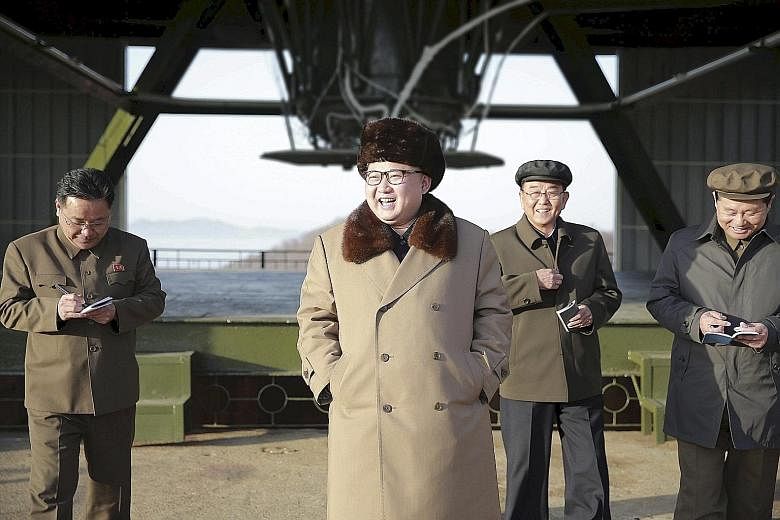WASHINGTON • Three years ago, then United States President Barack Obama ordered Pentagon officials to step up their cyber and electronic strikes against North Korea's missile programme in the hopes of sabotaging test launches in their opening seconds.
Soon, a large number of North Korea's military rockets began to explode, veer off course, disintegrate in midair and plunge into the sea.
Advocates of such efforts say they believe that targeted attacks have given US anti-missile defences a new edge and delayed, by several years, the day when North Korea will be able to threaten US cities with nuclear weapons launched atop intercontinental ballistic missiles.
But other experts have grown increasingly sceptical of the new approach, arguing that manufacturing errors, disgruntled insiders and sheer incompetence can also send missiles awry.
-
3 Number of years ago when then US President Barack Obama ordered Pentagon officials to step up cyber and electronic strikes against N. Korea's missile programme.
56% Percentage of overall failure rate for flight tests of US anti-missile interceptors under near-perfect conditions.
Over the past eight months, they note, North Korea has successfully launched three medium-range rockets. Its leader, Mr Kim Jong Un, now claims his country is in "the final stage in preparations" for the inaugural test of his intercontinental missiles - perhaps a bluff, perhaps not.
An examination of the Pentagon's disruption efforts, based on interviews with officials of the Obama and Trump administrations, as well as a review of extensive but obscure public records, found that the US still does not have the ability to effectively counter North Korean nuclear and missile programmes. Those threats are far more resilient than many experts thought, and pose such a danger that Mr Obama, as he left office, warned incoming President Donald Trump they were likely to be the most urgent problem he would confront.
Mr Trump has signalled his preference to respond aggressively. In a Twitter post after Mr Kim first issued his warning on New Year's Day, the President wrote: "It won't happen!" Yet, like Mr Obama before him, Mr Trump is quickly discovering he must choose from highly imperfect options.
He could order the escalation of the Pentagon's cyber and electronic warfare effort, but that carries no guarantees. He could open negotiations with North Korea to freeze its nuclear and missile programmes, but that would leave a looming threat in place. He could prepare for direct missile strikes on the launch sites, but there is little chance of hitting every target. He could press the Chinese to cut off trade and support, but Beijing has always stopped short of steps that could lead to the regime's collapse.
At two meetings of Mr Trump's national security deputies in the Situation Room, the most recent last Tuesday, all those options were discussed, along with the possibility of reintroducing nuclear weapons to South Korea. Administration officials say those issues will soon go to Mr Trump and his top national security aides.
The decision to intensify the cyber and electronic strikes in early 2014 came after Mr Obama concluded that the US$300 billion (S$423 billion) spent since the Eisenhower era on traditional anti-missile systems - often compared to hitting "a bullet with a bullet" - had failed the core purpose of protecting the continental US. Flight tests of interceptors based in Alaska and California had an overall failure rate of 56 per cent, under near-perfect conditions.
So the Obama administration searched for a better way to destroy missiles. It reached for techniques the Pentagon had long been experimenting with under the rubric of "left of launch", because the attacks begin before the missiles even reach the launch pad, or just as they lift off. For years, the Pentagon has publicly advocated these kinds of sophisticated attacks in testimony to Congress.
NYTIMES

